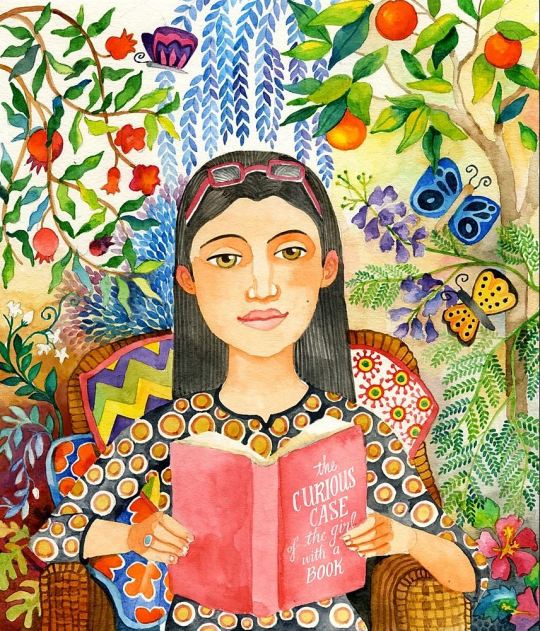Photo

My latest book https://www.amazon.com/dp/B0BPR6YMB1
0 notes
Photo

I have a dream… https://www.americanrhetoric.com/speeches/mlkihaveadream.htm
0 notes
Photo

Anti-Immigrant is Anti-Christ https://www.facebook.com/joan.of.arc.trial.transcripts/posts/3257901154267474?__tn__=K-R
0 notes
Photo

I thought we were supposed to help immigrants, not hurt them. (Artist - Shepard Fairey)
3 notes
·
View notes
Photo

When I read Emma Curtis Hopkins sometimes I find it difficult to understand how she can repeatedly say “matter does not exist” or “the material world does not exist,” but I can better grasp her ideas in terms of understanding E=MC2. There is a great little book that explains Einstein’s famous equation in practical terms... that is to say, the only substance in the universe is Energy, and Matter (Mass) is merely condensed Energy; love this book for explaining E and M (and C and 2) in practical terms: https://www.amazon.com/gp/product/0425181642
0 notes
Text
Joan of Arc and Mark Twain
Mark Twain wrote, “I like Joan of Arc best of all my books; and it is the best; I know it perfectly well. And besides, it furnished me seven times the pleasure afforded me by any of the others; twelve years of preparation, and two years of writing. The others needed no preparation and got none.”
Twain was passionate about historical accuracy when writing about Joan of Arc, and he learned French to read available documentation about her life. His notebooks from 1855 are full of French language exercises that illustrate the painstaking process he used to learn the language. By 1860 Twain was reading Voltaire, and when his book about Joan of Arc was published in 1896, he listed 11 academic sources to bolster his claims about the accuracy of details included in his book.
In the transcripts from Joan of Arc’s 1431 Condemnation Trial, she provides meticulous details about having supernatural encounters with long-dead Catholic saints. She claimed to hear the voices of these saints daily, and she provided other details about having visual encounters with apparitions of the saints.
Scholarly debate continues to this day on the source of Joan’s “voices” (the mysterious interior locutions that guided her behavior). Some say Joan suffered from delusions, but she claimed her voices gave her the instructions that led to her military success. She also stated numerous times that her voices enabled her to make accurate predictions about future events—which were confirmed by many witnesses who gave testimony during Joan’s 1455 Rehabilitation Trial.
Twain’s interest in supernatural and paranormal phenomena began in the 1840s when twice he witnessed his mother’s recovery after the intervention of a faith healer. Twain also had a dream in which he saw a future event—his brother dead, lying in a coffin. The dream was full of details that later proved to be entirely accurate, down to details such as a single red rose laying in the middle of a bouquet of white flowers.
After those events, Twain began having experiences he described as “thought transfer,” and he joined the London Society for Psychical Research in 1885. During the twelve years of research Twain did in preparing to write about Joan of Arc, he became enthralled with Joan and her supernatural experiences, all of which are documented in her trial transcripts.
When Twain was the guest of honor during a 1905 dinner attended by Andrew Carnegie, organizers of the event planned to surprise Twain by having a woman appear as Joan of Arc. The following quote is from a New York Times article published December 22, 1905, “Joan of Arc Appears to Startle Mark Twain—Surprise Prepared for Him by Society of Illustrators.”
“It had been arranged that when the humorist arose to speak, Miss Angersten, a well-known model, was to appear in the garb and with the simple dignity of Jean d’Arc, his favorite character in all history. He was on his feet as Jean d’Arc entered the room. She wore the armor of the French heroine and her hair and face made a strangely appealing picture. The face of the humorist, which had been wearing its ‘company’ smile all night, suddenly changed. He had every appearance of a man who had seen a ghost. His eyes fairly started out of his head, and his hand gripped the edge of the table. …The humorist looked toward the door, and there was absolute silence—puzzled silence—for many did not know whether it was time to laugh, disrespectful to giggle, or discourteous to keep solemn.”
Today, May 30, is Joan of Arc’s feast day in the Catholic Church, marking the anniversary of the day she was burned at the stake in Rouen, France, in 1431. She led thousands of men in military battles that were decisive in ending the Hundred Years War, and she was officially appointed as commander-in-chief of the French army by King Charles VII, but he later abandoned her when he could have intervened to save her from execution.
During Joan’s Condemnation Trial in 1431, which lasted from January 9 until May 30, Guillaume Manchon, a notary, produced the trial transcripts in a language referred to as Medieval/Middle French, with oversight and assistance from two other notaries, Guillaume Colles and Nicolas Taquel.
Later, Manchon and one of the trial judges, Thomas de Courcelles, translated the Middle French into Latin and five handwritten copies were made. One copy was sent to Rome, three copies are in Paris, and one copy was destroyed ceremoniously in 1456 at the conclusion of a Rehabilitation Trial, which nullified the verdict of the Condemnation Trial.
The first unabridged translations of those original Latin transcripts were published in modern French in 1841 by Jules Étienne Joseph Quicherat and in English in 1932 by W.P. Barrett. A shorter, abridged version produced by Emilia P. Sanguinetti—which is included with this book by Mark Twain—was translated and edited using those two unabridged translations and Pierre Champion’s “Procès de Condamnation de Jeanne d’Arc, Texte, Traduction et Notes,” published in 1921.
Emilia P. Sanguinetti is the author and translator of the book, “Joan of Arc: Her Trial Transcripts.” She has five years of formal French language training and her translation of Joan of Arc’s trial transcripts is included with this publication of Mark Twain’s book: https://www.amazon.com/dp/B019BCELHK
8 notes
·
View notes
Photo
Looks like Joan of Arc to me https://www.joan-of-arc-book.com/lesbian.html

dia sketch.. they’re pretty
14K notes
·
View notes
Text
Joan of Arc: 100th Anniversary of Being Canonized as a saint by the Catholic Church
Yesterday was the 100th anniversary of the day Joan of Arc was canonized as a saint of the Catholic Church. The following information is an excerpt from my book, “Joan of Arc: Her Trail Transcripts,” which provides some background information that few people know about.
During the canonization process, which the Catholic Church carries out to examine the life of an individual who is being considered for official, public recognition and honor as a saint, numerous character flaws were documented against Joan, including faults involving morality. Until 1983, the canonization process used an adversarial trial system, and the person appointed to oppose the cause for sainthood was referred to as the Devil’s Advocate (DA). The system is no longer adversarial but still involves gathering voluminous documentation about the person’s life.
Henry Ansgar Kelly analyzed documentation from Joan’s beatification and canonization process and referenced the following from DA Augustine Caprara, who was concerned that “she boasted of her virginity, challenging her interrogators to have her inspected.” (84) Caprara also found Joan to be guilty of immodesty by not being careful enough about exposing her body around men “because the Duc d’Alençon testified that he saw her beautiful breasts at times.” (84) DA John Lugari noted, “the same is true of John d’Aulon, who could glimpse her nipples when helping her to arm.” (85) Other testimony from the Rehabilitation Trial noted by Lugari during the canonization process included the following anecdote provided by Jean Marcel:
I have heard that the Duchess of Bedford had Joan examined to see whether she was a virgin or not, and that she was found to be a virgin. And I heard also from Jeannotin Simon, a tailor, that the Duchess of Bedford ordered him to make a woman’s tunic for Joan, and that when he tried it on her, he softly put his hand on her breast. She was annoyed and slapped Jeannotin’s face. (86)
DA Alexander Verde noted the following, as summarized by Kelly (the DA is also referred to as the Promoter of the Faith):
Moving on to Joan’s lack of humility, the Promoter cites another Consultor, who believes that not enough has been made of the objections about Joan’s love of luxurious clothing, her horses [she had several horses], and so on, and the not always humble way in which she dealt with her judges. It all shows an attitude much different from that of the saints. (87)
Also, there were more serious problems discussed and documented by the DAs, including the abjuration signed by Joan to escape being burned at the stake. While signing the document under such pressure is completely understandable, it is nevertheless a clear failure in the type of heroic virtue that is found in people who are canonized. DA Verde also raised suspicions about her Voices, stating, “Who knows whether she did not suffer some hallucination and cultivated it as consonant with her own genius.” (88)
Joan’s path to canonized sainthood began in 1869 when the Bishop of Orleans sent a formal petition to Rome. Initial investigations into Joan’s case began five years later due to delays caused by the Franco-Prussian War. Between 1874 and 1888, two consecutive bishops oversaw approximately ninety sessions spanning three separate investigations, after which the case was accepted by Rome’s Sacred Congregation of Rites. Documentation from the first DA, Caprara, is dated 1892, and the next significant event occurred in 1894:
The title of Venerable is first attributed to Joan in the decree of the Congregation of Rites approving of the introduction of her cause, “after the voice and writing of the Promoter of the Faith, Augustine Caprara, had been heard,” [in] a decree dated January 27, 1894, and signed by the pope himself on that day. … Later in 1894, the Sacred Congregation of Rites published a longish history of Joan of Arc in which no whisper of blame is to be heard. (89)
Two volumes of documentation were published in 1901 that address concerns raised by the second DA Lugari, who asserted “the principle obstacle to Joan’s consideration for sainthood is her reliance on her own judgment in the matter of her revelations.” (90) However, in Joan’s defense, the “Defender Minetti spends a great deal of time showing that Joan consistently attempted to have her case removed from the prejudicial court of the bishop of Beauvais and brought to the pope.” (90) Defender is the title given to the individual who opposes the DA.
An extraordinary event occurred in the next phase of the canonization process. The Catholic Church does not make pronouncements that a person being considered for sainthood “failed to qualify.” Processes may continue for decades, and centuries may pass because the individual does not progress further from the title of Venerable. However, between April 19, 1902, when DA Verde wrote a 24-page attack on Joan’s character, and February 12, 1903, when the Defender Minetti wrote a 367-page response that was supplemented by a 198-page Expositio Virtutum (Exposition of Virtues) document, headlines such as the following appeared in U.S. newspapers:
Will Not Be Canonized: Morals of Joan of Arc Were Not Those of a Saint (91)
Joan of Arc: Canonization Denied to Her (92)
Joan of Arc Not to Be Canonized (93)
The story published under the first headline listed above appears on page two of The Indianapolis Journal, dated November 10, 1902:
BALTIMORE, Md., Nov 9—Rome has advised ecclesiastical circles here of the decision of the Congregation of Rites that Joan of Arc, the Maid of Orleans, shall not be canonized, and in so deciding has stigmatized the name of the famous girl in a startling manner. The principal reason for which canonization is denied is the alleged discovery of facts against her moral character which precluded the possibility of according to her saintly reverence.
The congregation has also announced that Joan of Arc was guilty of the grave fault of attacking Paris on a feast of the Blessed Virgin, in signing a confession to the effect that she had no divine commission to deliver France from her enemies, and that her claims to such distinction were fraudulent and a prevarication. The confession was made, according to the English, in the hope that she might be saved thereby from the ignominious death at the stake which she afterwards suffered.
The proclamation of the reasons has caused surprise here, as it is felt that they will seriously offend religious elements in France, where Joan of Arc is regarded as a national patron saint, on the same plane with St. Patrick in Ireland and St. George in England and St. James in Spain. The practical aspersion of her character in France as a saint, it is generally believed, will prove a play into the hands of the present French Ministry, engaged as it is in sup-pressing the religious orders.
The Roman curia has never been partial to Joan of Arc. The agitation to have her canonized began during the later years of Napoleon III, and it is alleged that had he remained on his throne and continued to maintain an army in the eternal city for the protection of the temporal rights of the Papacy the matter would have been settled in her favor long ago. But with the overthrow of Napoleon and the withdrawal of the French troops from Rome, which ended in the seizure of the city by the Italians and the conquest of the states of the church, the question dragged along until the accession of Pope Leo XIII, who at once saw the importance of pleasing the French Catholics and identifying French national sentiment with Catholicism.
Queen Victoria, at the head of the English nation, whose ancestors had condemned Joan of Arc at the stake, was asked if she had any objections to offer, it is said, to the Maid of Orleans being canonized, and on a negative reply being received the process of canonization was begun. Joan of Arc was accordingly “beatified,” which is the first step toward canonization, and is now termed “blessed.”
That the Queen of England, a Protestant, should have been consulted by the Vatican relative to the canonization of a Catholic saint, may appear extraordinary, until it is remembered that the Maid of Orleans was regarded as a witch by the English and that her “martyrdom,” as the French people believed, for freedom’s sake, as well as that of conscience, is the chief ground on which her canonization was asked.
The French people have now, it is said, learned for the first time that the Queen was consulted before the beatification of Joan of Arc, and indignation is felt because of it.
As far as known Joan of Arc left no descendants. She had a brother, and from him are descended the Marquises and Counts De Maleysie, one of whom is married to an American girl, Miss Sterns, of New York, who would have figured prominently at the canonization ceremonies in St. Peter’s, Rome.
The following text is from Harper’s Weekly, dated April 11, 1903, and is written in a tabloid style:
About three months ago the Congregation of Rites at Rome announced its resolution to deny canonization to Joan of Arc, giving, among its several reasons for its actions, a declaration to the effect that after a careful consideration of all evidence presented both for and against the fair Joan, it was impossible to arrive at any other conclusion but that the dame in question was not entitled to the surname of “maid” [“maiden,” or virgin] accorded to her by her admirers. … This declaration by the Congregation of Rites that Joan of Arc was not entitled to the qualification of “maid” lends a new importance to the pretensions put forward by several French noblemen, of a more or less authentic character, to include her among their ancestors. … It is only fair to add, however, that the general public has always been agreed that Joan of Arc left no descendants—at any rate of a legitimate character. (93)
Regarding the news reports quoted above, which relate “the discovery of facts against her moral character” and a “declaration by the Congregation of Rites that Joan of Arc was not entitled to the qualification of ‘maid,’” it’s clear the primary sources for the news reports implied that Joan was not a virgin. However, because there was so much evidence that Joan was, in fact, a virgin, it’s possible that DA Verde and others may have concluded that Joan consummated a relationship with a woman.
Although there is no evidence Joan consummated a relationship with Robert de Baudricourt, her response to the accusation made in Article 11—as well as other comments by Joan that she was willing to give up her virginity if it was the will of God—appears to support the possibility that she had a relationship with Baudricourt that was more than friendship but which may or may not have been sexual. The charges specified in Article 11 were written by the trial judges and the story could have been embellished or entirely fabricated by Baudricourt.
Article 11:
Joan, having entered into intimate relations with Robert de Baudricourt, boasted to have told him that after having accomplished everything revealed to her by God, that she would have three sons: the first would be Pope, the second emperor, and the third king.
After hearing this, the captain said to her, “Now then, I would like to give you a child since they’re going to be such powerful men, because I’m worth as much or more and I would be better off.” To which Joan replied, “Gentle Robert, no, no, this is not the time; the Holy Spirit will find a way!” Robert confirmed and repeated this conversation in many places, including in the presence of clerics, lawyers and notable persons.
Joan’s response:
To this eleventh article, Joan answered by referring us to the answers she made elsewhere on this subject; and as for having three children, she never boasted about it.
Joan’s statements regarding a willingness to give up her virginity if it was God’s will indicates that Joan probably had heterosexual inclinations and may have been bisexual. Additionally, the following evidence indicates Joan may have been “gender fluid.”
Joan’s extreme reluctance to give up wearing men’s clothes, even for the purpose of attending Mass, was reflected in the transcripts of the March 15 session: “As urgently as she could, she implored us to allow her to attend Mass in the clothes she wore, without any change.” Yet, despite being adamant about remaining in men’s clothes at all times, Joan expressed a willingness to change into women’s clothes but only for specific women:
March 3 Session:
We asked her whether she was requested to stop wearing men’s clothes at the castle of Beaurevoir, and she replied, “Yes, that is true, and I answered I would not stop wearing men’s clothes without getting God’s permission.” She said the Demoiselle of Luxembourg and the Lady of Beaurevoir offered her a woman’s dress, or the cloth to make one, and they told her to wear it, however, Joan replied that she did not have God’s permission and it was not yet time. When asked if Messire Jean de Pressy and others at Arras did not offer her women’s clothes, she said that he and many others had often asked her to wear a woman’s dress. Asked whether she believed she would have done wrong or committed a mortal sin by wearing women’s clothes, she replied that she did better to obey and serve her sovereign Lord, namely God. However, she said that if she had to wear a woman’s dress, she would rather have done so at the request of those two ladies than of any other ladies in France, except the queen.
Joan’s path to sainthood mirrors a contemporary culture that’s often cited for a lack of morality and an inability to coalesce around a common set of principles that define the difference between good and bad behavior. But Joan’s situation reflects the reality of many Catholics who are often referred to by Pope Francis as people on the margins—those who live on the outskirts of the Church. These individuals are striving to live a life of love but feel they are second-class members of the Church because they aren’t officially permitted to receive Holy Communion even though they are not subjectively guilty of committing a mortal sin. These members of the Church include many divorced and remarried Catholics, gays and lesbians in same-sex relationships, and others who are in some way nonconformist but nevertheless love Christ and love the Church. Perhaps Joan of Arc will eventually be viewed as the patron saint of Catholics who were driven out of the Church by the haughtiness of holier-than-thou hypocrites
More excerpts from the book are available at: https://www.joan-of-arc-book.com/lesbian.html
0 notes
Photo

Thank you St. Joseph, the (Miracle) Worker, for answering my novena prayer. Artist: Cecilia Lawrence (aka Theophilia) https://www.deviantart.com/theophilia/art/St-Joseph-the-Worker-icon-678724786
1 note
·
View note
Text
Joan of Arc’s Paranormal Experiences
This is a “new age” explanation of the paranormal phenomena reported by Joan of Arc in her trial transcripts https://www.liloumacetv.com/Giant-invisible-beings-working-with-Dr-Joe-Dispenza_a2812.html
0 notes
Photo

This is dis-grace-ful; it’s exactly the same as saying to Christ, “No, you are not welcome here.” (Matthew 25:34-35) https://www.nytimes.com/2020/04/20/us/politics/trump-immigration.html “Trump to Halt Immigration into the U.S.” (New York Times article by Katie Rogers and Michael D. Shear)
0 notes










